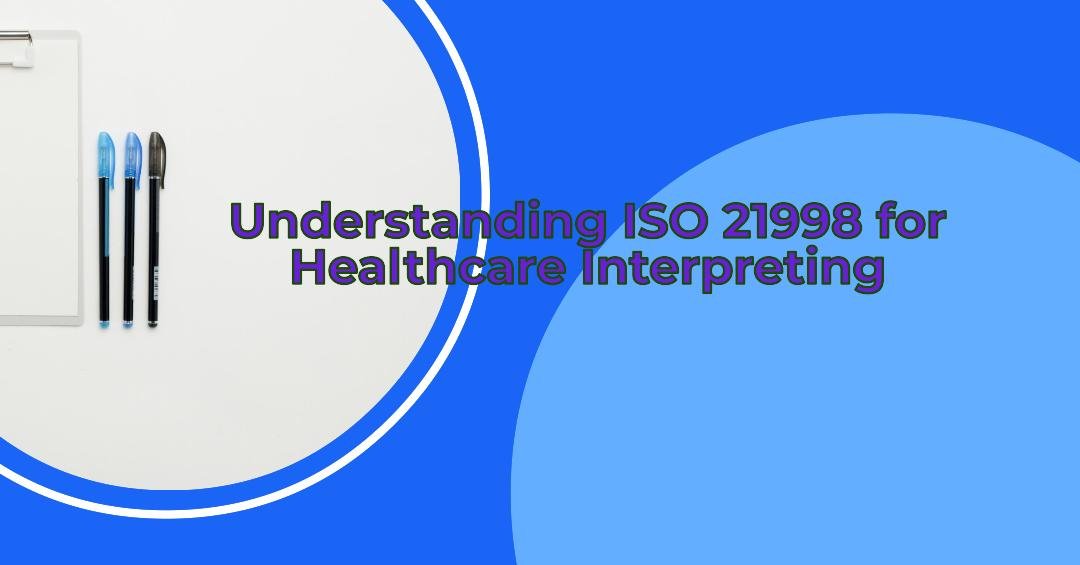
Navigating New Standards:
Understanding ISO 21998 for Healthcare Interpreting
Introduction: The landscape of healthcare interpreting has witnessed significant enhancements with the introduction of ISO 21998. This standard focuses on the competencies and responsibilities of healthcare interpreters, aiming to improve communication between healthcare providers and patients who speak different languages. As healthcare continues to globalize, this standard is crucial for ensuring that language barriers do not compromise the quality of care.
Understanding ISO 21998: ISO 21998, officially implemented in 2020, provides comprehensive guidelines for interpreting services in healthcare settings. The standard covers various aspects, from the qualifications of interpreters to the operational procedures that interpreting service providers must follow. One of the primary goals of ISO 21998 is to foster a better understanding and implementation of effective communication practices, which are pivotal in delivering safe and competent healthcare services across language divides.
Key Components of ISO 21998:
- Qualifications and Competencies: ISO 21998 sets clear expectations for the qualifications of healthcare interpreters. Interpreters are required to demonstrate proficiency across several competencies, including linguistic, technical, and intercultural skills. This ensures they can effectively manage communication in diverse medical contexts, from routine consultations to complex medical emergencies.
- Responsibilities of Interpreting Services: The standard also outlines the duties of interpreting service providers. These include establishing clear working terms, ensuring proper working conditions, and maintaining continual education and training for interpreters. By setting these standards, ISO 21998 aims to elevate the overall quality of interpreting services in healthcare.
- Continuous Professional Development: Ongoing learning and adaptation are crucial in healthcare interpreting. ISO 21998 encourages interpreters to engage in regular professional development activities, such as training and education, to stay current with medical advancements and evolving language use.
Implications for Healthcare Providers and Patients: For healthcare providers, adhering to ISO 21998 means partnering with interpreters who meet stringent professional standards, thereby enhancing the quality of patient care. For patients, this standard provides reassurance that healthcare interpreters are well-equipped to convey their medical needs accurately, regardless of language barriers.
Challenges and Opportunities: Implementing ISO 21998 comes with its challenges, including the need for healthcare facilities to update their policies and invest in qualified interpreting services. However, the opportunities it presents—improved patient outcomes, reduced misunderstandings, and enhanced patient satisfaction—are invaluable.
Conclusion: ISO 21998 represents a significant step forward in the standardization of healthcare interpreting. As the world becomes more interconnected, the ability to deliver effective and empathetic healthcare across languages is more important than ever. By embracing ISO 21998, healthcare providers can ensure that all patients receive the care they deserve, in a language they understand.


